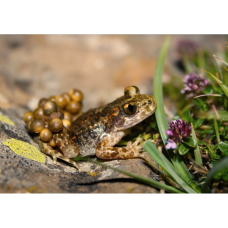Les séminaires de l’ISYEB accueillent Ferran Palero du Centro de Estudios Avanzados de Blanes, Espagne

Les séminaires de l'ISYEB tous les mardi en amphithéâtre Rouelle

Les séminaires de l'ISYEB tous les mardi en amphithéâtre Rouelle
De 12h30 à 13h30
Ferran Palero, post-doctorant au Centro de Estudios Avanzados de Blanes, Espagne, interviendra au prochain séminaire de l’ISYEB sur l’évolution des langoustes (Achelata) et leur larve phyllosome
The Evolution of Achelata Lobsters and their Phyllosoma Larvae
Achelata lobsters are a group of economically important decapod crustaceans with a rich fossil record. Although all lobsters have a superficially similar body plan, the morphological and ecological diversity is surprising. The evolutionary relationships between different lobsters was recently estimated by molecular data (6 genes) and 193 morphological characters. In this seminar, the results obtained specifically for Achelata lobsters are highlighted by relating the molecular phylogenetic tree and systematics of the group. The Achelata diverge in the two existing families, Palinuridae and Scyllaridae, around 250 Ma (Permian), and the appearance of the specialized larval form « phyllosoma » can be traced back to the origin of the group. Within spiny lobsters (Palinuridae), the evolutionary relationships between genera are now well-resolved, but the main clades found within slipper lobsters (Scyllaridae) are not in accordance with the current taxonomy based on adult morphology. Thanks to the use of DNA barcoding methods, we have been able to assign dozens of phyllosoma larvae to their corresponding species and genera. This revealed the utility of larval stages for investigating the monophyly of some genera. I will also present the results obtained during several visits to the MNHN (Paris), NHM (London) and ZMUC (Copenhagen), this will take us to a journey through the Atlantic Ocean and the South China Sea and will show us the importance of the study and maintenance of historical collections.



